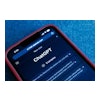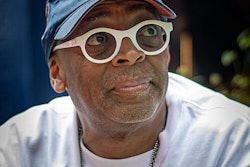Recently, a young student who knew I once taught communications as an adjunct (St.Mary’s College of California) asked me about the value of a communications degree.
Then Richard Sherman happened.
It was clear. You can study communications. But it doesn’t mean you’ve mastered it.
If you saw Sherman’s post-game interview with Fox Sports Erin Andrews after the NFC Championship, then you know what I mean.
The modern world has come a long way from shouting from mountaintops, smoke signals, drum beats and pigeons carrying messages. But it’s all still about communication, and understanding how ideas go from A to B in the world will help you master life.
Modern communication has made the world small, and you can communicate to our global village in picture and sound instantaneously. Sherman communicated to about 55 million (the number of people watching the Seahawk/49er game on TV).
That’s the earthquake. Now add to that the residual tsunami wave from social media and the internet, Twitter, et al.
Communications today? You can reach millions in a second.
But what do you want to say? What’s your message?
After a hard fought victory do you want to communicate jubilance with a little bit of sportsmanship and grace? Humility maybe?
Or are we so coarse and “in your face” that under the guise of “keeping it real” we want to let it all out raw? Like sewage.
If it’s the latter, what are we communicating?
That you’re a bad ass, braggart, and egotistical? Is that the “game face”? Part of communication being received is based on likeability of the communicator. Do we “like” that?
How about communicating that you’re an educated and athletically gifted Stanford grad and that indeed you learned something from your class work?
Sherman showed that face in a press conference later in the week when he responded to his critics. But it all could have been avoided if he thought about the image he was presenting and communicating to people in their living rooms.
Think of the image: A guy in dreads and trash-talking game face, yelling and screaming, even if it was directed at another Black player—the 49ers’ Michael Crabtree—is still accompanied by a video image that includes a wide-eyed, scared looking White female sideline reporter, and, in the background, a middle-aged-looking White male.
What was the communications major communicating?
We still live in an age where Whites cross the street when an African-American male, with or without baggy pants, walks toward them. If you need a way to make suppressed racism come to the surface, Sherman may have found it.
And yet Sherman’s surprised that people are upset with him, especially when they call him a “thug”?
In his week to rehabilitate his persona, Sherman put out video showing how he offered to shake hands with Crabtree before it all, but was rejected. That supposedly sent Sherman into rage mode.
But if you ever played sports with a trash talker, the handshake at the end after an entire game of lack of sportsmanship (which trash talking is) is really just the cherry on the cake. It’s the ultimate insult because you the trash talker won. “Good game” and a handshake is like the final ironic dagger into the heart of your opponent.
And Sherman is showing that to indicate he’s a good guy?
No Sherman is a lout, by his communication.
But I want to be fair. If Sherman says he’s offended by someone calling him a “thug,” I will respect that.
“Thug” originally was a racist term against South Asians. It has been deracinated from its original Sanskrit/Hindu roots indicating a “vandal.”
So it’s a racist term to begin with.
Sherman says he thinks it has become to be a euphemism for the “N” word, because often it’s used to describe all Black gangstas. And when that’s communicated to non-Blacks, suddenly I can see how “thug” and the “N” word can be melded. Though some people use “thug” because they don’t want to say the “N” word, it doesn’t make it the “N” word; it just means some people are describing a kind of aggressive behavior and attitude.
Still, if that offends Sherman, I won’t debate his feelings.
It’s like the use of the term “Redskins” to describe the NFL football team. If you use the term Redskins and want to fight for your right to say it, sure. But if Native Americans find it racist, that’s not debatable.
We can find another team name.
My stand on that issue makes me use another word for Sherman. Thug is out. I’ll say Sherman is a lout.
Sensitivity to words is important. And Sherman has shown he is capable of changing his loutish ways, easy enough. When it comes to Asian Americans, especially. Sherman showed it in his press conference when he described Broncos quarterback Peyton Manning’s style picking apart opposing defenses as finding a “crack in the armor.”
ESPN got in a whale of trouble when it used the phrase with an offending word that rhymes with “dink” to the appendage “ … in the armor.”
That Sherman showed some sensitivity shows he did learn a lesson or two in communication at Stanford. And to the young student who asked, it shows the practical value of a communications degree in college.
But I’m still rooting for the Broncos.
Emil Guillermo writes on issues of race for the Asian American Legal Defense and Education Fund (www.aaldef.org/blog) Like him at www.facebook.com/emilguillermo.media ; twitter@emilamok



















